Drilling in rock up to 10,000 pounds per square inch (1129.9 Nm) in hardness, rock drilling systems for single-rod machines are qualified for most horizontal directional drilling (HDD) operations. Above 10,000 pounds per square inch, however, the demands on the machine and tooling call for a different kind of downhole power.
But the right drill is just one component of a successful HDD job. Knowing the makeup of the rock you’ll encounter downhole can help identify which Horizontal Directional Drill machine and downhole tooling will be right for your jobsite, both in terms of cost and productivity.
“The specific rock you’re drilling in and how many passes you’ll make through that rock will help determine the rig size you need to operate,” said Vermeer Corporation’s Lifecycle Product Manager Jason Zylstra.
“Cost of operation and the time frame for getting a job done also contribute to which machine you decide to use.”
Whether adapting an existing rig to include an air hammer or mud motor, or purchasing a dedicated dual-rod machine, many contractors have found success in diversifying their operations to take on rock projects. How can you determine which option is best for your next HDD job? Here are a few characteristics of each type of machine that can help with that decision.
Air hammers
These machines work similar to a jackhammer, only with a blunt-nose bit featuring carbide buttons. Air hammers are effective in HDD applications in rock with a compression strength of 18,000 pounds per square inch (2033.7 Nm) and above.
Air hammers employ repeated concussion to break up solid rock to a flowable form.
The Mincon Air Hammer hard rock range offers the most complete line of steerable hammer systems on the market, covering pilot holes from 3 1⁄2” (89mm) to 9 1⁄4” (235mm) the tools can be used on mini class hdd machines to large pipeline class machines.
Mud motors
Mud motors use high-pressure drilling fluid to independently power a downhole tri-cone or polycrystalline diamond compact (PDC) bit. Because mud motors tend to require a larger amount of drilling fluid than other types of machines, they’re often paired with a reclaimer on the jobsite.
“The drawback of mud motors is that they’re mostly limited to larger rigs, 60,000 pounds (27,215.5 kilograms) and above,” Mr Zylstra said.
“Renting is an attractive scenario for many contractors. If everything goes right, it’s easier to understand any potential drill head maintenance needs.”
Dual-rod machines
Dual-rod systems (such as the D23x30DR S3 and D40x55DR S3) use two independently controlled drill rods, one within the other, during operation.
When in pilot bore mode, an outer rod provides rotation for steering, while an inner rod provides rotational torque to the tri-cone or PDC bit. Among rock-focused drilling systems, dual-rod machines can be a very versatile option. They are qualified for conditions ranging from mixed rock to solid rock. Although, air hammer and mud motor machines can be the better option in operations with hard, highly compressed rock formations.
“In rock drilling, dual rod is the jack-of-all-trades and has the most utility across the spectrum of high-pressure HDD operations,” Mr Zylstra said.
“It’s going to have some limits to its productivity in extreme environments, but there’s a huge swath of conditions in which a dual-rod machine is going to be the most suited for the job.”
Contact your local Vermeer dealer or consult with a Vermeer drilling/ tooling product specialist to find out which machine is best for your next HDD job.

 MyDealer:
MyDealer:


